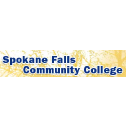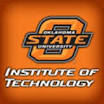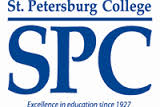What do they do?
Construct, maintain, or repair medical supportive devices such as braces, orthotics and prosthetic devices, joints, arch supports, and other surgical and medical appliances.
Also known as:
Certified Pedorthotist, Hearing Aid Repair Technician, Lab Technician, Orthopaedic Technician, Orthopedic Technician, Orthotic and Prosthetic Technician (O and P Technician), Orthotic Fabricator Technician, Orthotic Technician, Orthotics Fitter, Prosthetic Lab Technician, Prosthetic Technician, Prosthetics Fabrication Technician, Prosthetics Technician, Registered Prosthetic Orthotic Technician
-
0%
Change
Ranks #34 in job growth rate80Job Openings
Ranks #8 in net job growth
Looking for colleges that offer a specific major? Use the College Match Tool to find your best-matched schools and discover your estimated Net Price!
- Some college, no degree (32%)
- High school diploma equivalent (27%)
- Associate's degree (18%)
- Bachelor's degree (16%)
- Less than high school diploma (4%)
- Master's degree (2%)
- Doctorate or Professional Degree (1%)
People in this career often have these skills:
- Active Listening - Giving full attention to what other people are saying, taking time to understand the points being made, asking questions as appropriate, and not interrupting at inappropriate times.
- Critical Thinking - Using logic and reasoning to identify the strengths and weaknesses of alternative solutions, conclusions, or approaches to problems.
- Quality Control Analysis - Conducting tests and inspections of products, services, or processes to evaluate quality or performance.
- Reading Comprehension - Understanding written sentences and paragraphs in work-related documents.
- Speaking - Talking to others to convey information effectively.
- Troubleshooting - Determining causes of operating errors and deciding what to do about it.
- Social Perceptiveness - Being aware of others' reactions and understanding why they react as they do.
- Operations Monitoring - Watching gauges, dials, or other indicators to make sure a machine is working properly.
- Complex Problem Solving - Identifying complex problems and reviewing related information to develop and evaluate options and implement solutions.
People in this career often know a lot about:
- Production and Processing - Knowledge of raw materials, production processes, quality control, costs, and other techniques for maximizing the effective manufacture and distribution of goods.
- Customer and Personal Service - Knowledge of principles and processes for providing customer and personal services. This includes customer needs assessment, meeting quality standards for services, and evaluation of customer satisfaction.
- English Language - Knowledge of the structure and content of the English language including the meaning and spelling of words, rules of composition, and grammar.
- Mechanical - Knowledge of machines and tools, including their designs, uses, repair, and maintenance.
People in this career often have talent in:
- Oral Comprehension - The ability to listen to and understand information and ideas presented through spoken words and sentences.
- Problem Sensitivity - The ability to tell when something is wrong or is likely to go wrong. It does not involve solving the problem, only recognizing that there is a problem.
- Near Vision - The ability to see details at close range (within a few feet of the observer).
- Oral Expression - The ability to communicate information and ideas in speaking so others will understand.
- Deductive Reasoning - The ability to apply general rules to specific problems to produce answers that make sense.
- Visualization - The ability to imagine how something will look after it is moved around or when its parts are moved or rearranged.
- Arm-Hand Steadiness - The ability to keep your hand and arm steady while moving your arm or while holding your arm and hand in one position.
- Information Ordering - The ability to arrange things or actions in a certain order or pattern according to a specific rule or set of rules (e.g., patterns of numbers, letters, words, pictures, mathematical operations).
- Finger Dexterity - The ability to make precisely coordinated movements of the fingers of one or both hands to grasp, manipulate, or assemble very small objects.
- Inductive Reasoning - The ability to combine pieces of information to form general rules or conclusions (includes finding a relationship among seemingly unrelated events).
- Manual Dexterity - The ability to quickly move your hand, your hand together with your arm, or your two hands to grasp, manipulate, or assemble objects.
- Speech Recognition - The ability to identify and understand the speech of another person.
- Speech Clarity - The ability to speak clearly so others can understand you.
- Control Precision - The ability to quickly and repeatedly adjust the controls of a machine or a vehicle to exact positions.
- Multilimb Coordination - The ability to coordinate two or more limbs (for example, two arms, two legs, or one leg and one arm) while sitting, standing, or lying down. It does not involve performing the activities while the whole body is in motion.
People in this career often do these activities:
- Drill holes in parts, equipment, or materials.
- Operate welding equipment.
- Read work orders or other instructions to determine product specifications or materials requirements.
- Construct customized assistive medical or dental devices.
- Adjust fabrics or other materials during garment production.
- Cast molds of patient anatomies to create medical or dental devices.
- Repair medical or dental assistive devices.
- Inspect medical or dental assistive devices.
- Draw guide lines or markings on materials or workpieces using patterns or other references.
- Measure clients to ensure proper product fit.
- Polish materials, workpieces, or finished products.
- Operate grinding equipment.
- Mix ingredients to create specific finishes.
- Apply protective or decorative finishes to workpieces or products.
- Instruct patients in the use of assistive equipment.
- Repair production equipment or tools.
This page includes data from:

 Occupation statistics: USDOL U.S. Bureau of Labor Statistics Occupational Employment Statistics
Occupation statistics: USDOL U.S. Bureau of Labor Statistics Occupational Employment Statistics
 Videos: CareerOneStop, USDOL/ETA and the Minnesota Department of Employment & Economic Development
Videos: CareerOneStop, USDOL/ETA and the Minnesota Department of Employment & Economic Development








